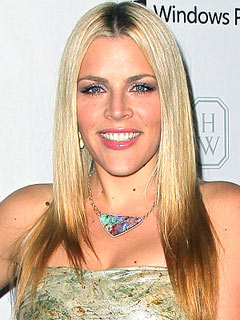MANILA, Philippines (AP) — Abu Sayyaf gunmen have freed two Filipino members of a Jordanian TV journalist's crew who were kidnapped by the al-Qaida-linked militants last year as they set out to interview the extremists in their jungle lairs in the southern Philippines, police said Sunday.
Policemen found frail-looking cameraman Ramel Vela and audio technician Roland Letriro late Saturday and brought them to a hospital in southern Sulu province, where they were kidnapped in June along with Jordanian Baker Abdulla Atyani, provincial police chief Senior Superintendent Antonio Freyra said.
Atyani is believed to still be held by the gunmen in the jungles of Sulu's mountainous Patikul town, about 950 kilometers (590 miles) south of Manila.
"We're so happy. We never thought we'd make it out alive," a teary-eyed Vela said at his hospital bed, adding that he and Letriro have not seen Atyani since the Jordanian was separated from them by their kidnappers five days after they were taken hostage.
Visibly thinner, shocked and with overgrown hair and beard, the two were examined by doctors and given bread and water in the Sulu hospital, which was guarded by police and marines.
"They really lost weight because they were constantly under stress each day," Freyra told The Associated Press.
An unspecified amount was paid to secure the freedom of the two captives, according to three security officials who have been closely monitoring the kidnappings. The three spoke on condition of anonymity because they were not authorized to talk to reporters.
Military officials have said Abu Sayyaf militants have demanded 130 million pesos ($3.1 million) for the release of Atyani and his two crew members.
Hundreds of rebels from the larger Moro National Liberation Front, which signed a 1996 autonomy deal with the government, have also been negotiating with the Abu Sayyaf for the release of Atyani and other foreign hostages, including two European bird watchers who were abducted last year.
Moro commander Khabir Malik said his group had taken the initiative to seek the freedom of the hostages to help the government clean up the image of Sulu, a predominantly Muslim province where the Abu Sayyaf has carried out deadly bombings, kidnappings for ransom and beheadings, primarily in the early 2000s.
U.S.-backed military offensives have crippled the Abu Sayyaf in recent years, but it remains a national security threat. Washington has listed the group as a terrorist organization.
Malik said last week that he met with an Abu Sayyaf commander, Jul-Asman Sawadjaan, to seek the release of Atyani and his two crew members, who were believed being held in the jungles of Sulu's mountainous Patikul town. But the extremists refused to release their captives to the Moro rebels, Malik said.
Malik had suggested that his armed group could consider other options, including a rescue, to secure the captives' freedom from the smaller Abu Sayyaf group.
Abu Sayyaf gunmen handed the two Filipinos to still-unknown negotiators, but not to Malik's group, angering the Moro rebels, according to the three security officials.
A gunbattle erupted between Malik's forces and the Abu Sayyaf militants Sunday in Patikul's jungles, Freyra said. There were no immediate reports of casualties, and police and the military went on alert amid the fighting.
Sulu Governor Abdusakur Tan has said he will not allow Malik's group to take any drastic action like a rescue that could harm the Abu Sayyaf's hostages.
Atyani was working for the Arabic satellite channel Middle East Broadcasting Corp. when he interviewed Osama bin Laden and his aides in Afghanistan about three months before the Sept. 11, 2001, attacks. He said they told him that the coming weeks would hold "important surprises that will target American and Israeli interests in the world."
He later moved to Dubai-based Al-Arabiya TV as its Asia bureau chief. He traveled to Sulu to work on a documentary about the country's volatile south and possibly interview Abu Sayyaf militants in the impoverished province, Freyra and other officials said.
The other hostages being held by the Abu Sayyaf include the two European men, who were seized from nearby Tawi Tawi province in February last year and are believed to have been taken to Sulu, a Japanese treasure hunter, a Malaysian national and a Filipino resident of Sulu, officials say.
On Friday, Washington renewed a longstanding warning to Americans not to travel to Sulu "due to the high threat of kidnapping ... and violence linked to insurgency and terrorism there."
The Abu Sayyaf, which has about 380 armed fighters in Sulu and nearby islands, is an extremist offshoot of a Muslim rebellion that has been raging in the predominantly Catholic nation's south for decades. The violence has been fueled by abject poverty, corruption, proliferation of illegal weapons and weak law enforcement.










